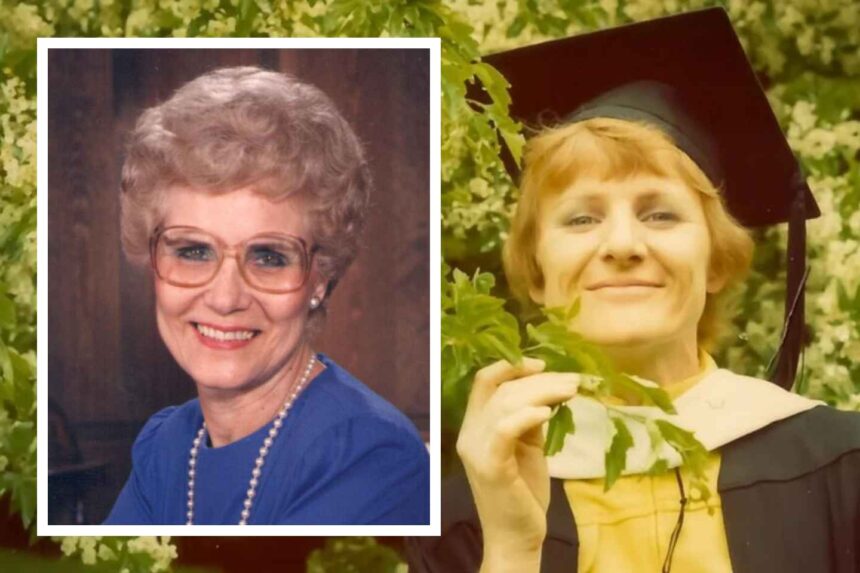Dorothy Miles transformed the landscape of deaf culture through her groundbreaking work as a poet, actress, and advocate. Born in 1931, she became one of the most influential figures in the development of sign language poetry and theater, bridging the gap between deaf and hearing communities through her artistic vision.
Her contributions extend far beyond entertainment. Miles pioneered new forms of artistic expression that celebrated American Sign Language (ASL) as a complete, rich language capable of conveying complex emotions and abstract concepts. Through her performances and educational work, she challenged misconceptions about deaf culture while creating space for deaf artists to flourish.
This exploration of Dorothy Miles’ life reveals how one woman’s passion for language and performance reshaped how society views sign language, accessibility, and the creative potential within deaf communities.
Early Life and the Foundation of a Pioneer
Dorothy Squire Miles was born on August 19, 1931, in Llanfairpwll, Wales. She lost her hearing at age eight due to cerebral spinal meningitis, an experience that would shape her entire worldview and career trajectory. Rather than viewing her deafness as a limitation, Miles discovered it opened doors to a vibrant visual language that would become her life’s work.
Her family moved to the United States when she was young, and Miles attended the Pennsylvania School for the Deaf. This institution became crucial in her development, as it provided her first formal introduction to American Sign Language. Unlike many deaf education programs of the time that emphasized oral communication, Miles embraced sign language as her primary mode of expression.
Miles later attended Gallaudet University in Washington, D.C., the world’s premier institution of higher learning for deaf and hard-of-hearing students. At Gallaudet, she studied English literature and developed her understanding of poetic forms and dramatic techniques. This academic foundation would prove essential as she began experimenting with ways to adapt traditional literary forms into visual-spatial language.
Her educational journey continued at the University of Washington, where she earned a master’s degree in English. This combination of deaf cultural education and mainstream literary study positioned Miles uniquely to become a translator between two linguistic worlds.
Breaking New Ground in Sign Language Arts
Miles’ career began to take shape in the 1960s when she joined the National Theatre of the Deaf (NTD) as both an actress and writer. The NTD, founded in 1967, represented a revolutionary concept: professional theater performed entirely in sign language, with spoken interpretation for hearing audiences.
At the National Theatre of the Deaf, Miles discovered her calling as a sign language poet. She began creating original works that utilized the three-dimensional nature of sign language, incorporating facial expressions, body movement, and spatial relationships in ways that had never been systematically explored in artistic contexts.
Her approach to sign language poetry was groundbreaking because it treated ASL as a complete artistic medium rather than simply a translation tool. Miles developed techniques that played with the visual rhythm of signs, created rhyme through handshape patterns, and built metaphors using the spatial properties of signing. Her poem “Mime” became one of her most celebrated works, demonstrating how sign language could create layered meanings impossible to achieve in spoken language.
Miles also contributed significantly to sign language interpretation as a profession. She worked to establish standards and training programs that would elevate interpretation from a well-meaning volunteer activity to a skilled professional service. Her efforts helped create the foundation for modern interpreter education programs that recognize the linguistic complexity and cultural competency required for effective interpretation.
Beyond her artistic work, Miles served as an educator and mentor. She taught at various institutions and workshops, sharing her techniques with a new generation of deaf performers and interpreters. Her teaching emphasized the importance of understanding both deaf culture and hearing culture to create truly effective communication bridges.
A Legacy That Transcends Language
Dorothy Miles’ impact on deaf culture cannot be overstated. She helped establish sign language poetry as a legitimate art form, complete with its own aesthetic principles and performance traditions. Her work proved that ASL was not merely a functional communication tool but a language capable of supporting sophisticated artistic expression.
Her influence extended to the broader accessibility movement. By demonstrating the artistic and intellectual richness possible in sign language, Miles helped shift public perception of deaf people from objects of pity to members of a distinct cultural community with their own language, traditions, and contributions to society.
The techniques Miles developed continue to influence contemporary deaf poets and performers. Her emphasis on the visual and spatial elements of sign language opened creative possibilities that artists are still exploring decades later. Modern sign language poetry festivals and competitions can trace their lineage back to the groundwork she established.
Miles also played a crucial role in the development of deaf studies as an academic discipline. Her work provided evidence that deaf communities possessed cultural characteristics worthy of scholarly attention, contributing to the eventual recognition of deaf culture in universities and research institutions.
Her advocacy for professional interpreter training had lasting effects on accessibility services. The standards and approaches she helped develop became fundamental to interpreter education programs, improving communication access for deaf people in educational, medical, legal, and professional settings.
The Continuing Relevance of Her Vision
Dorothy Miles passed away in 1993, but her influence continues to shape how society approaches sign language, deaf culture, and accessibility. Her vision of sign language as a complete artistic medium has been validated by subsequent generations of deaf artists who have built upon her foundation.
Current discussions about linguistic diversity, cultural preservation, and inclusive arts programming often reference concepts that Miles pioneered. Her work demonstrated that accessibility and artistic excellence are not competing goals but complementary aspects of truly inclusive creative expression.
The growth of sign language studies in academic settings, the recognition of ASL as a foreign language in many educational institutions, and the increasing visibility of deaf performers in mainstream media all reflect the cultural shifts that Miles helped initiate through her artistic and educational work.
Her approach to bridging deaf and hearing communities remains relevant as society continues to grapple with questions about inclusion, communication, and cultural understanding. Miles showed that meaningful inclusion requires not just accommodation but recognition and celebration of different ways of experiencing and expressing human creativity.
Honoring a Cultural Pioneer
Dorothy Miles transformed how the world understands sign language, deaf culture, and the relationship between accessibility and artistic expression. Through her poetry, performance, and advocacy, she created space for deaf voices in cultural conversations while establishing sign language as a medium capable of supporting sophisticated artistic work.
Her legacy reminds us that innovation often comes from those who experience the world differently. By embracing her deafness as a source of creative possibility rather than limitation, Miles opened doors for countless others and enriched the cultural landscape for both deaf and hearing communities.
The next time you see sign language interpretation at a concert, attend a deaf theater performance, or encounter discussions about linguistic diversity in education, remember Dorothy Miles. Her vision continues to shape a more inclusive world where all forms of human communication are recognized as valuable contributions to our shared cultural heritage.


